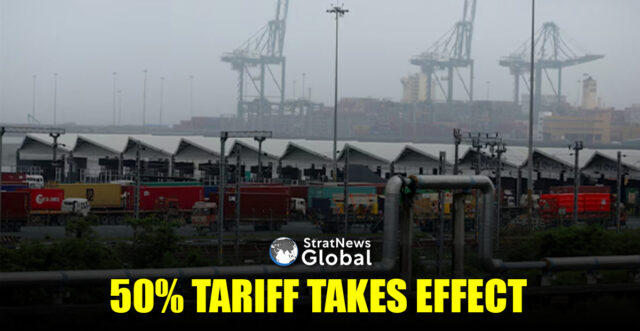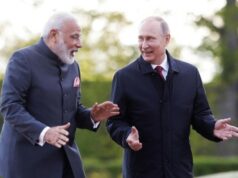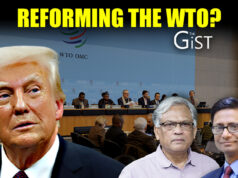United States President Donald Trump’s move to double tariffs on Indian goods, raising them to as high as 50%, came into effect on Wednesday, intensifying strains between the world’s two largest democracies and strategic allies.
A punitive 25% tariff imposed due to India’s purchases of Russian oil adds to Trump’s prior 25% tariff on many Indian goods. It takes total duties as high as 50% for goods such as garments, gems and jewellery, footwear, sporting goods, furniture and chemicals – among the highest imposed by the U.S. and on par with Brazil and China.
The new tariffs threaten thousands of small exporters and jobs, including in Prime Minister Narendra Modi’s home state of Gujarat.
India’s Commerce Ministry did not immediately respond to a request for comment. However, a Commerce Ministry official, speaking on condition of anonymity, said exporters hit by tariffs would receive financial assistance and be encouraged to diversify to markets such as China, Latin America and the Middle East.
A U.S. Customs and Border Protection notice to shippers provides a three-week exemption for Indian goods that were loaded onto a vessel and in transit to the U.S. before the midnight deadline. These goods can still enter the U.S. at prior lower tariff rates before 12:01 a.m. EDT (0401 GMT) on September 17.
Also exempted are steel, aluminium and derivative products, passenger vehicles, copper and other goods subject to separate tariffs of up to 50% under the Section 232 national security trade law.
India trade ministry officials say the average tariff on U.S. imports is around 7.5%, while the U.S. Trade Representative’s office has highlighted rates of up to 100% on autos and an average applied tariff rate of 39% on U.S. farm goods.
Failed Talks
As the midnight activation deadline approached, U.S. officials offered no hope for India to avert the tariffs.
“Yeah,” said White House trade adviser Peter Navarro when asked if the increased tariffs on India’s U.S.-bound exports would go into effect as previously announced on Wednesday. He offered no further details.
Wednesday’s tariff move follows five rounds of failed talks, during which Indian officials had signalled optimism that U.S. tariffs could be capped at 15%, the rate granted to goods from some other major U.S. trade partners, including Japan, South Korea and the European Union.
Officials on both sides blamed political misjudgment and missed signals for the breakdown in talks between the world’s biggest and fifth-largest economies. Their two-way goods trade totalled $129 billion in 2024, with a $45.8 billion U.S. trade deficit, according to U.S. Census Bureau data.
Exporters Lose Competitive Edge
Exporter groups estimate hikes could affect nearly 55% of India’s $87 billion in merchandise exports to the U.S., while benefiting competitors such as Vietnam, Bangladesh and China.
“The move will disrupt Indian exports to the largest export market,” said S.C. Ralhan, president of Federation of Indian Export Organisations, noting about 55% of exports — including textiles, chemicals and leather – will face a 30–35% price disadvantage against competitors.
The government should consider a one-year moratorium on bank loans for affected exporters, besides extending low-cost credit and easier availability of loans, he said.
Rajeswari Sengupta, an economics professor at Mumbai’s Indira Gandhi Institute of Development Research, said allowing the rupee to “depreciate is one way to provide indirect support to the exporters” and regain lost competitiveness.
Sustained tariffs at this rate could dent India’s growing appeal as an alternative manufacturing hub to China for goods such as smartphones and electronics.
The U.S.-India standoff has raised questions about the broader relationship between India and the U.S., important security partners who share concerns about China.
However, on Tuesday, the U.S. State Department and India’s Ministry of External Affairs issued identical statements saying senior officials of the ministries and defence departments met virtually on Monday and expressed “eagerness to continue enhancing the breadth and depth of the bilateral relationship.”
Both sides also reaffirmed their commitment to the Quad, a partnership that brings together the U.S. and India with Australia and Japan.
(With inputs from Reuters)





